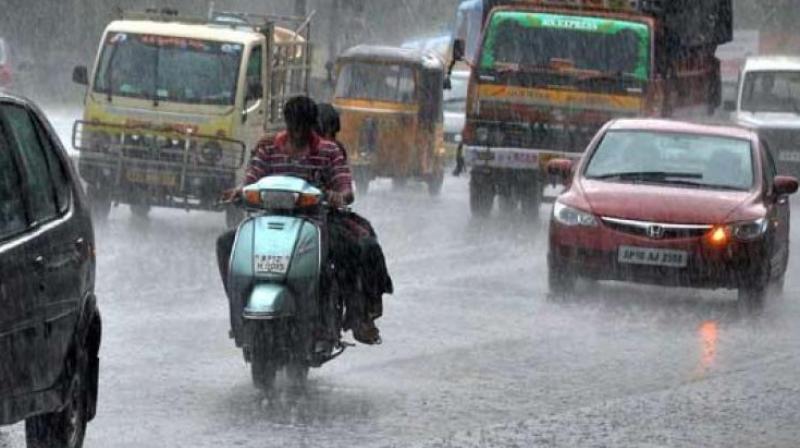IMD introduces ‘near-normal’ category this year

Hyderabad: The monsoon this year will be near-normal and the rain will be well-distributed which will help agriculture, the India Meteorological Department predicted on Monday.
“Weak El Niño conditions are likely to prevail during the monsoon season with reduced intensity in the later part of the season. Overall, the country is expected to have well-distributed rainfall scenario during the 2019 monsoon season, which will be beneficial to farmers during the kharif season,” Mr Ramesh said.
After its landfall in Kerala, the southwest monsoon enters the Telugu states via south Andhra Pradesh, takes a left turn towards southeastern Telangana state before covering coastal AP.
The monsoon period is considered the lifeline of the Indian subcontinent where the economy is still largely dependent on agriculture, but several parts of the country are now witnessing agricultural distress. The ‘near-normal’ is a category introduced by the IMD this year for rainfall between 96-104 per cent of the long period average.
In its forecast last year, the rainfall between 96-104 of the LPA (Long Period Average) was classified as ‘normal’. Rainfall between 90 and 96 per cent of the LPA is ‘below normal’ and 96 per cent rainfall also borders on ‘below normal’ and ‘normal’.
When asked about the ‘near normal’ category, Mr M. Rajeevan, secretary, earth sciences ministry, said it was similar to the ‘normal’ category.
“We will have a normal monsoon,” he told this newspaper.
Mr Rajeevan said weak El Nino conditions were likely to prevail during the monsoon season with reduced intensity. There could some effect of the El Nino in June, but monsoon may pick up pace from July, he added.
IMD Director General K.J. Ramesh said the effect of the El Nino is likely to weaken and with a positive ‘Indian Ocean Dipole (IOD)’, it is unlikely to have any major impact on the monsoon.
A positive Indian Ocean Dipole is associated with the cooling of the Indian Ocean waters, while a negative IOD is linked to its heating.

